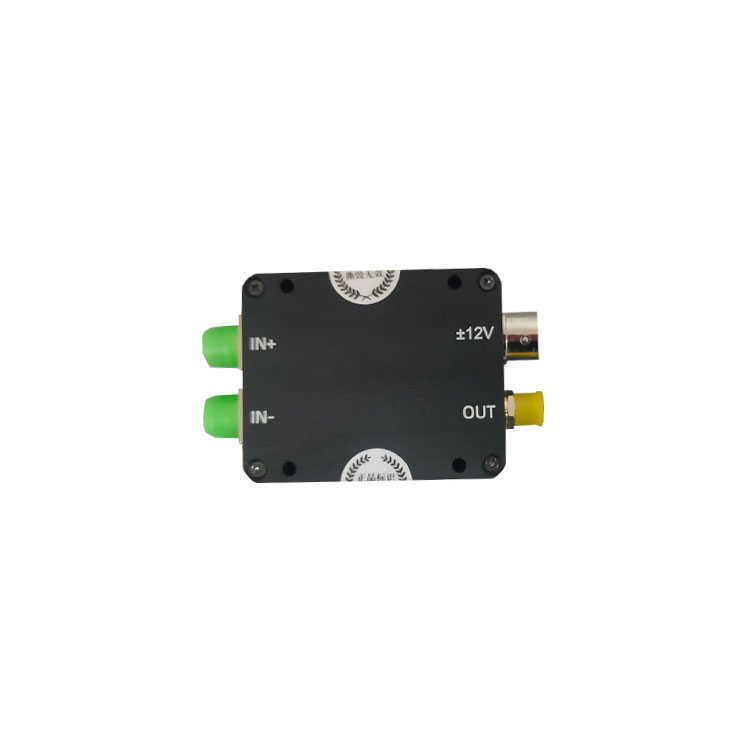Balanced photodetectors for distributed acoustic sensing
In distributed acoustic sensing systems with coherent optical paths, balanced photodetectors are required to detect the optical signals. Balanced photodetectors are realized by subtracting the output of two input lights.
Bandwidth of balanced photodetectors
In a fiber optic acoustic sensing system, the bandwidth of the balanced photodetector is 80M if an 80M frequency shifted acousto-optic modulator (AOM) is used, and if a 200M acousto-optic modulator (AOM) is used, then the bandwidth of the photodetector should be 200M.
Gain of balanced photodetectors
The recommended gain for balanced photodetectors is 50 kV/A. If the gain is too small the optical signal cannot be detected.
Core parameters of balanced photodetectors in distributed acoustic sensing systems
| Items | DAS-BPD-200M |
|---|---|
| Materials | InGaAs |
| Wavelength | 1000-1700nm |
| Input connector | FC |
| Responsivity | 0.9A/W @1550nm |
| Common mode rejection ratio | >20dB |
| Bandwidth (a) | DC-200MHz |
| Rise time (a) | 2ns |
| Gain (b) | 50kV/A |
| NEP (c) | 2.6pW/√Hz |
| Maximum output amplitude(a) | ±1.0V |
| Operating voltage | ±12V |
| Operating Current | <200mA |
| Output Impedance | 50Ω |
| Output coupling mode | AC |
| Output connector | SMA female |
| Operating temperature | -20~65℃ |
| Storage temperature | -40~85℃ |
Balanced photodetectors used for distributed acoustic sensing
The balanced photodetector contains two photodiodes and a low-noise transimpedance amplifier, in which the two photodiodes are matched to each other for excellent common mode rejection ratio
- What are the applications of distributed acoustic sensing?
- What kind of AOM should be used for DAS systems?
- What is the vibration response frequency of DAS?
- Spatial Resolution Of Distributed Acoustic Sensing
- What data acquisition card is needed for distributed acoustic sensing?
- EDFA for distributed acoustic sensing
- Balanced photodetectors for distributed acoustic sensing
